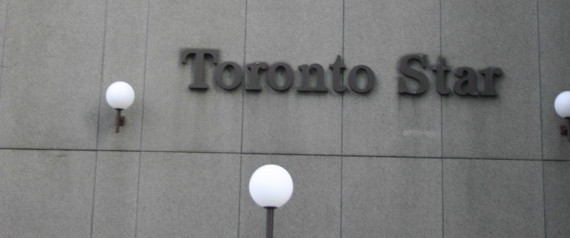
Last week, the Financial Post published revelations about the Toronto Star’s newsroom and the suicide of Raveena Aulakh, one of its reporters.
Aulakh took her own life earlier this summer and since then questions about the Star have been circling, despite the paper’s internal investigation, which concluded that “the company provided all reasonable support and assistance to Raveena.”
Sean Craig’s lengthy article tells a different story. Over the course of his investigation, Craig (formerly of CANADALAND) spoke to over a dozen sources and reviewed emails Raveena Aulakh sent before her death.
Up until now, we knew Raveena Aulakh had been in a relationship with her then colleague Jon Filson, a senior Star editor in charge of the Star Touch project. The relationship broke down and Filson was also in a relationship with Toronto Star managing editor Jane Davenport. In the wake of Aulakh’s death, Filson and Davenport ceased working in the Star newsroom. Filson was seemingly terminated, while Davenport is still employed by the Star, who have not clarified in what capacity.
Unifor, the Star’s union, called for an external investigation of the Star’s working environment. At first, the Star resisted, having conducted their own internal investigation, but eventually agreed. The Star then once again put the external investigation on hold because it couldn’t agree on the parameters with the union.
Craig’s piece explored lingering questions about the Star’s newsroom, and what he found was quite shocking. Here are the main points:
Two former interns at the Star have said they felt bullied by Filson. One described having a sexual relationship with him while he had direct oversight over her work, while Filson was married. Twenty-two at the time, the intern said she felt “bullied and trapped” by him and left the paper after both the relationship ended and the contract with the Star expired.
The second intern said the culture at the Star “was the most toxic newsroom I’ve ever worked in and eventually led to my decision to leave journalism altogether.” She said Filson bullied her, and his behaviour extended beyond interns.
Neither of the women reported Filson to management, but the second woman said she was discouraged from telling the union.
By 2008, Ryerson University’s paper, the Eyeopener, heard accounts of Filson’s behaviour. General manager Liane McLarty said young women were warned against interning at the Star because of several incidents involving Filson. This, it seems, is more preventative action than the Star ever took.
Days before her death, Aulakh wrote this her direct superior Lynn McAuley “I’m happy/grateful to go with you if I ever have to talk to [Toronto Star manager of labour relations] David Callum. Whatever you think and say, I will do that.”
It seems this was not the first time the issue came up with McAuley. A few weeks earlier, Aulakh wrote this about McAuley: “She said she likes Jane (Davenport) a lot and won’t say anything unless Jon (Filson) makes life miserable for people and Jane still protects him”.
From the Post’s piece: “On May 13, Aulakh wrote that McAuley told her ‘not to say anything to the union’ about the relationships between her and Filson and Filson and Davenport.”
Lynn McAuley wrote this about Jon Filson: “I’m alarmed he has this pattern… Completely unrelated to your relationship with him and his preying on interns … three managers today asked me in private how he can be stopped.”
The Post said McAuley tried to provide Aulakh with support, “checking in on her regularly during her free time when the reporter was on sick leave.” Outside of formal channels, it seems McAuley did everything she could to support Raveena Aulakh. But she chose not to pull any of the levers available within the company, which raises questions about how effective these protocols are and why she chose not to pursue them.
Before her death, Aulakh reached out to people in the newsroom which she perceived as an unhealthy environment. “I used to love that newsroom, it was my refuge. Now I’m scared of coming in — I feel emotionally unsafe.”
John Honderich is the most senior figure at the Toronto Star. A former Star employee told the Post that she emailed Honderich to offer help with the Star’s internal investigation. According to her, Honderich turned her documents away, saying that the investigation was only looking at the impact of the relationships on the work that the people involved produced. But (as she would later read in the press) the Star’s investigation was actually intended to also look at how Aulakh was supported by her colleagues, which the emails directly addressed. Honderich did not deny this allegation.
Aulakh sent several emails to newsroom staff, including management, about what was happening. Filson had a pattern of alleged bullying that many senior staff were aware of. The Eyeopener’s general manager said complaints regarding Filson went eight years back. Still, Filson kept getting promoted into senior positions, from features editor to, eventually, a leadership role in Star Touch.
Many have assumed that this tragedy was primarily about interpersonal relationships gone sour. Toronto Star Public Editor Kathy English referred to Aulakh as a “clearly heartbroken reporter.” But emails from Aulakh herself reveal that her despair had much to do with a different kind of loss. “I used to love that newsroom,” she wrote of the Star. “It was my refuge. Now I’m scared of coming in – I feel emotionally unsafe.”
Read the full Financial Post story here.
***